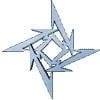Welcome to the EGGhead Forum - a great place to visit and packed with tips and EGGspert advice! You can also join the conversation and get more information and amazing kamado recipes by following Big Green Egg to Experience our World of Flavor™ at:
Want to see how the EGG is made? Click to Watch
Facebook | Twitter | Instagram | Pinterest | Youtube | Vimeo
Share your photos by tagging us and using the hashtag #BigGreenEgg.
Share your photos by tagging us and using the hashtag #BigGreenEgg.
Want to see how the EGG is made? Click to Watch
Brisket
Triumph2016
Posts: 5
in Beef
Hi all. I’m a new “egger” and have been having fun with ribs, salmon, cod and now brisket. Thanks all for the recipes and suggestions. I made brisket twice. The first time I did 4.5 hours at 250, took it off and wrapped in foil and did another hour and then let it rest on a plate and it was very good. But I read how to make it better so this time I did 6 hours at 225 and then wrapped in foil and did another 2 hours at 200. Temp was 145 at wrap and 194 when removed. I then let it rest on a tray for 2 hours and when carves it was much fryer than I’d hoped. Not sure what happened? Note: my first one, I rubbed in seasoning and started cook 1/2 hour later. The second one (the more dry one) was marinated in spices and beer for about 3 days before cook. Also they were two halves of the same full brisket Any thoughts on what I did wrong?
Answers
-
How did you split it? Did you split point from flat? If you did I’m betting the first cook was from the point which had way more fat and results in a more tender juicy chunk of meat. The flat is harder and less forgiving on nailing the cook.You mentioned 194° but didn’t mention if it probed tender. Temp is only a guideline to start checking for tenderness on cuts like butts, brisket and ribs.-----------------------------------------analyze adapt overcome2008 -Large BGE. 2013- Small BGE and 2015 - Mini. Henderson, Ky.
-
Hi. Thanks for the response. It was definitely probe tender (I read all the advice). Second one had the tip. That’s why I thought with the longer slow cook, the marinating etc it would be more tender. I even did this one over a pan of water whereas I didn’t do that on the first one. I’m stumped!
-
How much of the fat layer did you take off? It's important with the flat to leave at least 1/4" to 1/2" of fat, or you will dry out that meat.Napoleon Prestige Pro 665, XL BGE, Lots of time for BBQ!
-
Hi Mark. The brisket was pre-trimmed by the butcher and had about 1/8 inch of fat still on it. I didn't think that was bad as the suggestions I had read on the site said to trim off anything more than that. Again, this was the same brisket that I'd cooked before just the other half. The only thing I can think of is if my temp reading was off and even though it was "probe tender" it had been on too long.
-
Yes a brisket can be over done and be prone tender. I would say my first suggestion would be to get a probe to monitor grid temp and adjust your dome temp accordingly. Unless you are doing a very small lean cut of meat at 225 for 6 plus hours it shouldn’t be dry so to speak. I usually shoot for atleast 195 on a full packer and then I start checking for probe tender. Only when it’s probe tender will I pull it. I’ve had briskets be probe tender at 195 and pull apart like any video you have ever seen. I’ve also had them at 210 and be tough as hell. You just need to be the judge. Figure an hour or so at bare minimum per pound. No one nails it on their first try doing a brisket. Just let the probe tell you when it’s done and I promise your results will be satisfactory
-
ok thanks, i will try that. I appreciate all the insight.
Categories
- All Categories
- 184K EggHead Forum
- 16.1K Forum List
- 461 EGGtoberfest
- 1.9K Forum Feedback
- 10.5K Off Topic
- 2.4K EGG Table Forum
- 1 Rules & Disclaimer
- 9.2K Cookbook
- 15 Valentines Day
- 118 Holiday Recipes
- 348 Appetizers
- 521 Baking
- 2.5K Beef
- 90 Desserts
- 167 Lamb
- 2.4K Pork
- 1.5K Poultry
- 33 Salads and Dressings
- 322 Sauces, Rubs, Marinades
- 548 Seafood
- 175 Sides
- 122 Soups, Stews, Chilis
- 40 Vegetarian
- 103 Vegetables
- 315 Health
- 293 Weight Loss Forum


